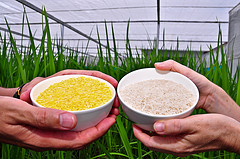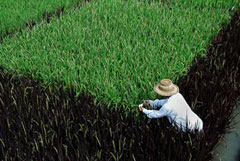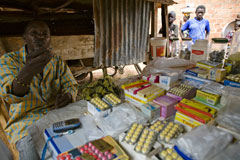 |
| Beekeepers in Ethiopia, ©Tom Pietrasik / Oxfam |
What have we learnt from past efforts to secure land rights in Africa? And how can land rights be secured under different tenure regimes?
These are the questions that were tackled on the second day of the inaugural
Conference on Land Policy in Africa, hosted by the Land Policy Initiative of the African Union, African Development Bank and UNECA, taking place currently at African Union headquarters in Addis Ababa.
Recognise and strengthen customary rights, starting with statutory recognition
Most of Africa’s land is held under customary land rights, and many of these property regimes are robust and have local legitimacy. Conventional land administration systems often fail in Africa, as they are not appropriately configured to address customary tenure rights.
Across the continent, there has been a move away from formal titling as the only or best way to secure rights. One of the main arguments in favour of titling – the ‘credit effect’ – has been been widely discredited. Customary tenure is the norm in Africa, not an aberration, and should be recognized and supported, not treated as an inferior form of tenure.
Policy, law and land administration need to recognise and secure rights held under diverse tenure systems. Individual land titling is a very limited type of formalization, which often fails to capture the complex and overlapping nature of customary tenure rights.
To what degree can statutory recognition of customary and other informal and unregistered property rights assist? While this provides a defence for local people against intrusions on their land, it does not clarify who holds what, and access to appropriate land governance and dispute resolution institutions. In particular, the inaccessibility of formal legal institutions of the justice system means that strengthening institutions from the local level is a key point of intervention.
Community, rather than individual, titling must be further explored as an option
At the same time, with enormously growing competition for land, and multiple threats of loss of tenure, there is widespread demand for registration or certification of some kind, and policymakers and practitioners need to respond to this.
Experiments with group or community titling of outer boundaries are an important innovation that has been implemented in a number of different ways in different environments, in Africa but also elsewhere, such as in the case of the Mexican ejidos.
Research is urgently needed to determine whether, in the recent cases in Africa, such as Mozambique, securing the outer boundary has provided effective relief against external threats to community land and natural resources and averted conflicts with neighbouring villages. We know that it does not automatically do so. How can community titling work for transhuman societies such as pastoralists, who assert collective rather than individual claims to land and related resources? Research is also needed to assess what impacts registering an external boundary and establishing local land administration committees has had on internal configurations of rights. Are rightsholders more secure?
Women’s land rights remain weak under customary tenure, but formalization is not necessarily the answer
Land grabbing does not only take the form of big corporate land deals – women are subject to having their land grabbed by extended family and local elites. Women who are trying to defend their land are subject to asset stripping, land grabbing and accusations of witchcraft. In these ways, women face the combination of traditional laws of inheritance with new challenges associated with growing urbanization, land demand and land values, as well as large-scale land-based investments.
Certification and commodifying land is not necessarily the answer. Even where statutory recognition is offered, women may be excluded through informal processes from becoming involved in land governance institutions. Land administration committees were established at
kebele level to take forward certification, but only 7% of those participating in these committees were women. Men dominate dispute resolution mechanisms, and for these reasons there remain disparities between land policy goals and implementation. And while some policymakers favour the growth of land markets, these do not benefit women, especially poorer grassroots women. We need to understand markets as being gendered institutions.
Custom or rights for women? This is a false dichotomy
African traditional systems are patriarchal, treating women as dependents, despite their central roles in land use. This prevents women from participating in land administration processes and institutions.
A salient message from several sessions, including the plenary and the session on women’s land rights, was that neither statutory nor customary laws adequately protect women. The tensions and contradictions between global frameworks, national laws, and traditions and customs must be resolved through challenging customs to conform with women’s human rights. The challenge is to transfer the issue of women’s property rights from the private domain of the household to the public domain of human rights. This means working with and transforming traditional institutions, as these are the fora to which women turn when seeking justice, rather than the formal legal system.
Supporting women’s collective action is key
There have been positive experiences of
women mobilizing to challenge discriminatory practices and institutions. Women can be supported to increase community awareness of gender injustice, even through processes that do not have an explicit gender focus, such as community mapping exercises to identify existing land uses and claims.
Women’s land rights can be strengthened through grassroots mobilization combined with supportive state institutions and wider alliances. Mobilization of women across rural but also urban areas can help to build broader coalitions pursuing their rights. Securing women’s land rights requires capacity building to equip women leadership skills to mobilise more women.
One priority is to design and implement new community justice mechanisms and processes, such as community monitors and community paralegals to intervene in violations of all people’s land rights. Again, interventions to secure rights in general can achieve real benefits for women, if appropriately designed. Women can collectively access services unavailable to individuals – for instance, a revolving loan fund based on women’s own savings and contributions from funding agencies enabled women to access land and engage a surveyor
Political leadership and evidence from research are needed to transform policies and practices
Parliaments have an important role in land governance: they approve, ratify and enact laws, frameworks and policies in their countries and regionally. They represent the communities and can sensitize and mobilize people on land policy issues. They also can approve budgets, and hold governments accountable, for land policy implementation.
They do, though, face constraints and the complexity of land issues requires parliamentarians to forge relationships with a wide variety of stakeholders. Parliaments can enact laws to strengthen transparency in land transactions, and to curb corruption, by requiring that Parliaments must consider and ratify large-scale land acquisitions above a certain size threshold, and all countries must have laws regulating large-scale land-based investments.
At the same time, promoting best practices requires us to have clear examples of positive customary systems – this is the foundation for evidence-based policy making. But evidence by itself does not change policy. Land is a profoundly political issue, and political leadership and support to challenge and transform. This requires working with national political leaders – in collaboration with regional and global bodies – to become champions of ordinary people’s land rights, and especially those of women, young people, and marginalised groups such as pastoralists.
Technical tools to secure land rights require wider policy and institutional support
Land rights tools should be implemented at country level to ensure that policies are implemented – but we need to learn about how multiple tools can be synchronized. There needs to be increased participation in interacting with the tools for in depth understanding of their application and particularly how civil society can make use of them and interrogate them.
The social domain tenure model (STDM), for instance, can be useful as information and planning tool for informal settlements. As a type of barefoot surveying, STDM is a bottom-up approach with a key role for the local community and both requires but can also strengthen partnerships among relevant stakeholders. It is key to include traditional leaders and community leaders and to ensure a mix of technical and social skills among implementing teams, to reduce land-related conflicts and to guard against discrimination, such as against women’s, young people’s and minority rights, in the course of implementation.
The third day of the conference will build on these discussions by focusing on inclusive agricultural growth: investment, productivity and land rights in the context of large-scale investments. Documentation and discussions are underway on twitter at
#africalandpolicy and further information is available at
www.africalandconference.org
by
Ruth Hall, Future Agricultures Consortium
Southern Africa Hub convenor and Associate Professor at the Institute of Poverty Land and Agrarian Studies (PLAAS)
This post originally appeared on the PLAAS blog.


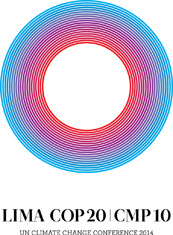

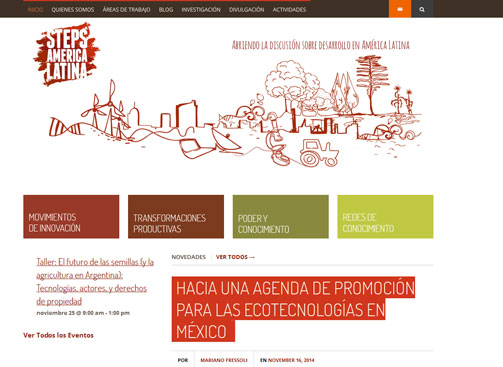

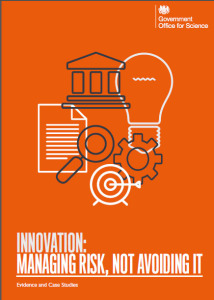
 I recently submitted
I recently submitted 

 Rural land tenure reforms are often justified as a route to improving agricultural productivity and investment. Is there evidence that they do, and to what degree is formalization a worthy intervention for policymakers aiming to improve productivity in agriculture?
Rural land tenure reforms are often justified as a route to improving agricultural productivity and investment. Is there evidence that they do, and to what degree is formalization a worthy intervention for policymakers aiming to improve productivity in agriculture?

